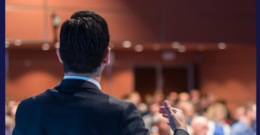Based on six sources and documents it analysed, Forbes has revealed TikTok and ByteDance personnel frequently engage in “heating,” a manual push that guarantees some videos “achieve a certain number of video views” on the social media platform.
Beyond letting the algorithm select what goes viral, six current and former employees of the social media giant reveal that the employees can discreetly hand-pick videos to boost their dissemination, employing a technique known as “heating.”
An internal TikTok document titled MINT Heating Playbook explains that around 1-2% of each day’s total video views are made up primarily of heated videos, and this percentage can significantly affect fundamental metrics.
Although many tech giants work to some extent to promote certain posts to their users, they often reveal when they do so. TikTok has never made this information publicly available.
For instance, Google, Meta, and TikTok have teamed up with public health and election organisations to disseminate factual information about COVID-19 and assist users in finding their polling location, while also making it clear how and why they choose to push these messages.
Forbes was informed by sources that TikTok has frequently used heating to attract influencers and brands, luring them into partnerships by artificially inflating the number of views on their videos.
According to Forbes, this implies that some influencers and brands—those with whom TikTok has tried to do business—may have benefited from heating at the expense of others.

Read also: ChatGPT: The AI tool that’s got people going crazy (commsroom.co)
The impropper use of heating by employees has also been reported by three individuals to Forbes, one of whom claimed that employees have been known to heat their own or their spouses’ accounts in contravention of cormpany policy.
Forbes has confirmed this through the documents it reviewed, further revealing that an account received more than three million views after one of these heating incidents..
Moreover, documents show that staff — including those at TikTok’s parent company, ByteDance, and even contractors working with the company — exercise considerable discretion in deciding which content to promote.
A document called TikTok Heating Policy says that employees may use heating to “attract influencers” and “promote diverse content,” but also to “push important information” and “promot[e] relevant videos that were missed by the recommendations algorithms.”
When asked about whether it has ever heated content created by the Chinese government or Chinese official media, or whether workers who are stationed in China have done so, TikTok declined to answer.
The Committee on Foreign Investment in the United States (CFIUS) and TikTok are currently negotiating a contract that, according to TikTok, would satisfy all national security concerns brought up by the app’s foreign ownership.
But since they believe the CFIUS agreement may be “too little, too late,” an increasing number of lawmakers are pushing their attemps to ban TikTok.
“Under the national security agreement currently being considered by CFIUS, all protocols and processes for promoting videos in the United States would be auditable by CFIUS and third party monitors; only vetted TikTok USDS personnel would have the ability to “heat” videos in the U.S,” TikTok spokesperson Maureen Shanahan said in a statement after the publication of Forbes’ report.
In addition, source code review by Oracle will verify that there are no alternate means of promoting content.” Forbes’ request for comment from Oracle was not immediately responded to.
You may also want to read: TikTok is an ‘unacceptable risk to Australian children’ – Henderson (commsroom.co)
Post Views: 52
Jaw de Guzman is the content producer for Comms Room, a knowledge platform and website aimed at assisting the communications industry and its professionals.






























